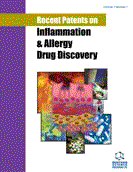Abstract
Particle engineering is the prime focus to improve pulmonary drug targeting with the splendor of nanomedicines. In recent years, submicron particles have emerged as prettyful candidate for improved fludisation and deposition. For effective deposition, the particle size must be in the range of 0.5-5 μm. Inhalers design for the purpose of efficient delivery of powders to lungs is again a crucial task for pulmonary scientists. A huge number of DPI devices exist in the market, a significant number are awaiting FDA approval, some are under development and a large number have been patented or applied for patent. Even with superior design, the delivery competence is still deprived, mostly due to fluidisation problems which cause poor aerosol generation and deposition. Because of the cohesive nature and poor flow characteristics, they are difficult to redisperse upon aerosolization with breath. These problems are illustrious in aerosol research, much of which is vastly pertinent to pulmonary therapeutics. A technical review is presented here of advances that have been utilized in production of submicron drug particles, their in vitro/in vivo evaluations, aerosol effects and pulmonary fate of inhaled submicron powders.
Keywords: Aerosol effects, airway disorders, deposition mechanism, lungs delivery, pulmonary fate, respirable submicron particles, translocation, nanomedicines, SUBMICRON PARTICLES DELIVERY, PARTICLE ENGINEERING
 22
22


















